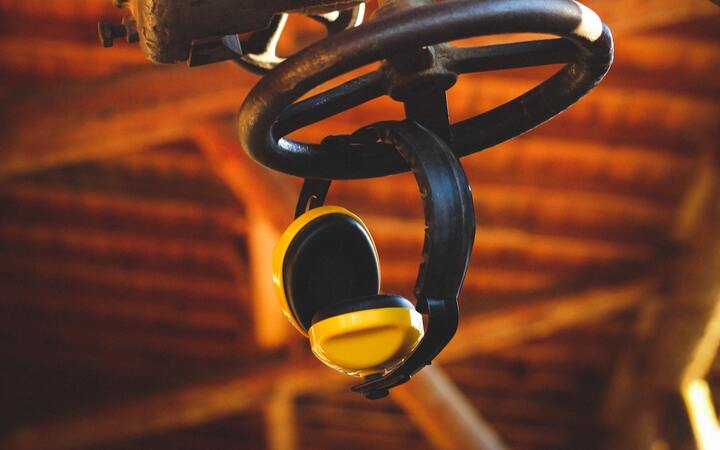Some suggest there might be alien aircraft on Earth now. The argument goes something like this:
-
A priori, there’s no reason there shouldn’t be alien aircraft. Earth is 4.54 billion years old, but the universe is 13.7 billion years old, and within a billion light years of Earth there are something like 5 × 10¹⁴ stars. Most of those stars have planets, and if an alien civilization arose anywhere and built a von Neumann probe, those probes would spread everywhere.
-
We have tons of observations that would be more likely if there were alien aircraft around than if there weren’t. These include:
- Vast numbers of anecdotal reports from pilots.
- Videos that appear to show objects with flight characteristics far beyond known human capabilities.
- Senators—with access to classified information—raising concerns about unknown craft near military installations.
- Rumors from multiple sources that the government has captured, intact alien craft.
None of these things are individually conclusive. But they’d be more likely to happen if there were aliens, right?
-
So if we agree that:
- the prior probability P[aliens] is pretty high; and
- P[gimbal video | aliens] > P[gimbal | no aliens]; and
- P[Pheonix lights | aliens] > P[Pheonix | no aliens]; and
- P[Trans-en-Provence | aliens] > P[Trans-en-Provence | no aliens]; and
- P[2021 Pentagon UAP Task Force report | aliens] > P[report | no aliens]; and
- P[UAP Task Force member whistleblower alleges US government has intact non-human vehicles | aliens] > P[whisleblower | no aliens]; and
- P[Former intelligence official says four people confirm secret US government program to analyze off-world craft | aliens] > P[official | no aliens],
then don’t we have to conclude that the posterior probability P[aliens | everything] is pretty high?
No.
What I like about this argument
First, I agree the prior probability should be pretty high. Say you just told me:
Okay, say there’s a universe with at least 10²⁴ stars, and most stars have planets, and on one planet somewhere life has evolved and started sending stuff to other planets and has an ever-accelerating pace of technological development.
Then I would agree—the odds that there would be alien aircraft on my planet seem good. It seems like we—or our artificial descendants—might well send aircraft to other planets. So why shouldn’t alien aircraft be here, now?
Second, it takes eyewitness reports seriously. There are a huge number of reports by pilots seeing objects accelerating at insane rates with no obvious wings, control surfaces, or signs of propulsion. It’s a mistake to dismiss these as a product of diseased minds or attention-seeking. There are just too many reports—both civilian and military—sometimes from pilots in different planes at the same time, sometimes invisible to radar and sometimes confirmed by radar from multiple sources. Usually, these people make little effort to draw attention to themselves—we only hear about their observations secondhand. They seem serious and well-intentioned.
(I hesitate to mention this, but I even have family members that report seeing something very strange years ago. I respect their intelligence and I don’t think they have an agenda—they barely talk about it and don’t consider it very important. The story goes that I myself saw it, but I was very young and remember nothing.)
Third, I agree that lots of these observations are very hard to explain. Now, of the 510 reports investigated for the 2022 UAP task force report, more than half had mundane explanations—usually balloons or drones. And some of the leaked videos could plausibly be explained in terms of stuff like rotating glare. But other incidents have apparently been measured by different sensors (e.g. vision, radar) or from multiple locations (e.g. a plane and a ship) simultaneously, and just don’t have a clear conventional explanation.
Fourth, I think this argument correctly rejects some of the other explanations people give for these observations. Some say these are real observations, just coming from human aircraft built in some highly classified (American? Chinese? Russian?) program. For some observations, that’s plausible. But I think it’s extremely unlikely a government has built a tic-tac that can accelerate at 700 gravities with no visible wings or propulsion. I don’t think governments are competent enough to develop technology so many generations ahead of what’s publically known—in this case involving new physics—all while keeping it completely secret. There are no historical examples of anything like this. (The Manhattan Project is probably the closest analogy, but even then many scientists around the world knew such a thing might be possible.)
Or, some people say that it’s disinformation—all the reports and videos are fake, and the US government is putting them out to confuse adversaries into thinking that it must be a classified program, and therefore the US must have secret alien-level technology. That’s… quite a theory. I mean, what’s the incentive? Does China worry about the US sending in the tic-tacs when they make plans to invade Taiwan? And why the reports in other countries around the world? It would be a massive conspiracy for a tiny benefit.
And finally, I’m a Bayesian extremist. If I do a calculation and I get weird results, then I’ll check my calculations. But ultimately, I’ll accept the results.
For simplicity, let’s say the prior probability that there could be alien aircraft is 50%, i.e.
P[aliens] = P[no-aliens] = 0.5.
And let’s say that the probability that multiple civilian pilots would all report seeing a tic-tac at the same time is nine times higher with aliens than without them, i.e.
P[tic-tac | aliens] = 0.09
P[tic-tac | no-aliens] = 0.01
Then an easy calculation gives that, conditioning on the tic-tac report, there's a 90% chance of aliens, i.e.
P[aliens, tic-tac] = P[aliens] P[tic-tac | aliens] = 0.5 × 0.09 = 0.045
P[no-aliens, tic-tac] = P[no-aliens] P[tic-tac | no-aliens] = 0.5 × 0.01 = 0.005
P[tic-tac] = P[aliens, tic-tac] + P[no-aliens, tic-tac]
= 0.045 + 0.005
= 0.050
P[aliens | tic-tac] = P[aliens, tic-tac] / P[tic-tac] = 0.045 / 0.050 = 0.90
P[aliens | tic-tac] = 0.90
I accept all that. But I still think aliens are very unlikely.
Is Bigfoot fucking with us?
If you’re not from North America, you may not be aware of Bigfoot—this big furry human-ish guy said to roam around in forests:

Now, I don’t want to compare believing in alien aircraft to believing in Bigfoot. You might argue that Bigfoot is less plausible, a priori. But regardless of that, the evidence for Bigfoot isn’t close to the evidence we have for weird stuff in the sky.
Never mind that. All I want to talk about is: Up until the 1990s or so, a lot of people seemed to take Bigfoot seriously. But today, almost no one does. Why?
Has society become more rational? Has Bigfoot just fallen out of fashion? Maybe, a little, but I don’t think that’s why.
No, the answer is simple: Today, there are cameras everywhere. Back in the 1960s, you might take some random grainy film footage kind of seriously, because not that many people were taking movies in the deep woods. But today? There are people hiking in the woods with cameras everywhere and no one has ever recorded a close-up video of Bigfoot.
If Bigfoot exists, then he’s monitoring our technological development and now hiding away more carefully, so we never get definitive proof. (He still makes time for lots of people who are incapable of taking their phones out of their pockets.) That seems unlikely, right?
So it’s not that we got evidence against Bigfoot. It’s that the lack of incontrovertible evidence has become damning.
Against alien aircraft
So what’s wrong with our initial argument?
First of all, lots of the old observations that seem to suggest alien aircraft turned out to be wrong. We now know that Roswell was a government coverup—but of high-altitude balloons with microphones to pick up Soviet atomic bomb tests, not aliens. Half of reports end up being shown to be weather balloons.
Beyond that, many other reports probably have mundane explanations we just haven’t found. The 2022 UAP task force attributed 6 of 510 reports to “clutter” like birds, weather events, or—somehow—plastic bags. But how good are our records for birds or plastic bags? It sure seems like if clutter caused a report, we have low odds of being able to attribute it to clutter. So surely clutter explains some of the other reports, too.
Second, all these observations are not independent. If a sensor glitch can happen in one place, it can happen in other places. If some natural weather phenomena can look like physics-defying tic-tac once, it can do that again. Beyond some level, the sheer number of reports just doesn’t add that much additional evidence.
Finally, and most importantly, you have to condition not just on what we see, but what we don’t see. We get grainy videos of some weird thing in the distance, but never close-up HD video. Pilots report seeing something flying far away, but it’s always far away—the tic-tac never flies up close to a passenger jet so hundreds of people can look at it in detail. We get rumors that the government has clear high-resolution pictures, but they never get leaked. We get rumors that the government has recovered intact alien aircraft, but it’s always someone who heard someone else talking about it—we never have a whistleblower who actually analyzed the aircraft and can tell us what they’re made out of. There’s never a local government—anywhere in the world—that captures an aircraft and posts photos online.
Across every dimension in which we could get evidence of aircraft, we see “everything that’s possible to see if alien aircraft didn’t exist”, but never more. There are many opportunities for a smoking gun, but we never get one.
If you want to calculate the probabilities correctly, you have to condition not just on the observations, but also on the ungodly number of observations that we don’t have—on the “billions of guns that failed to smoke”.
If alien aircraft were on Earth, they would need to be carefully calibrated to give us grainy distant glimpses (in every possible way) but never more. If alien aircraft are here, they’re screwing with us.





















